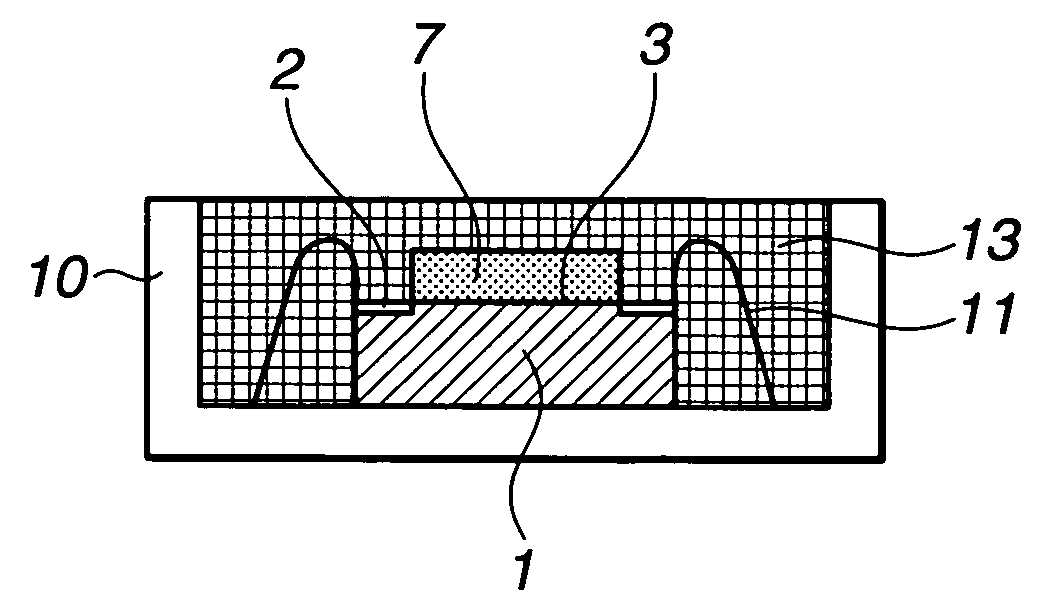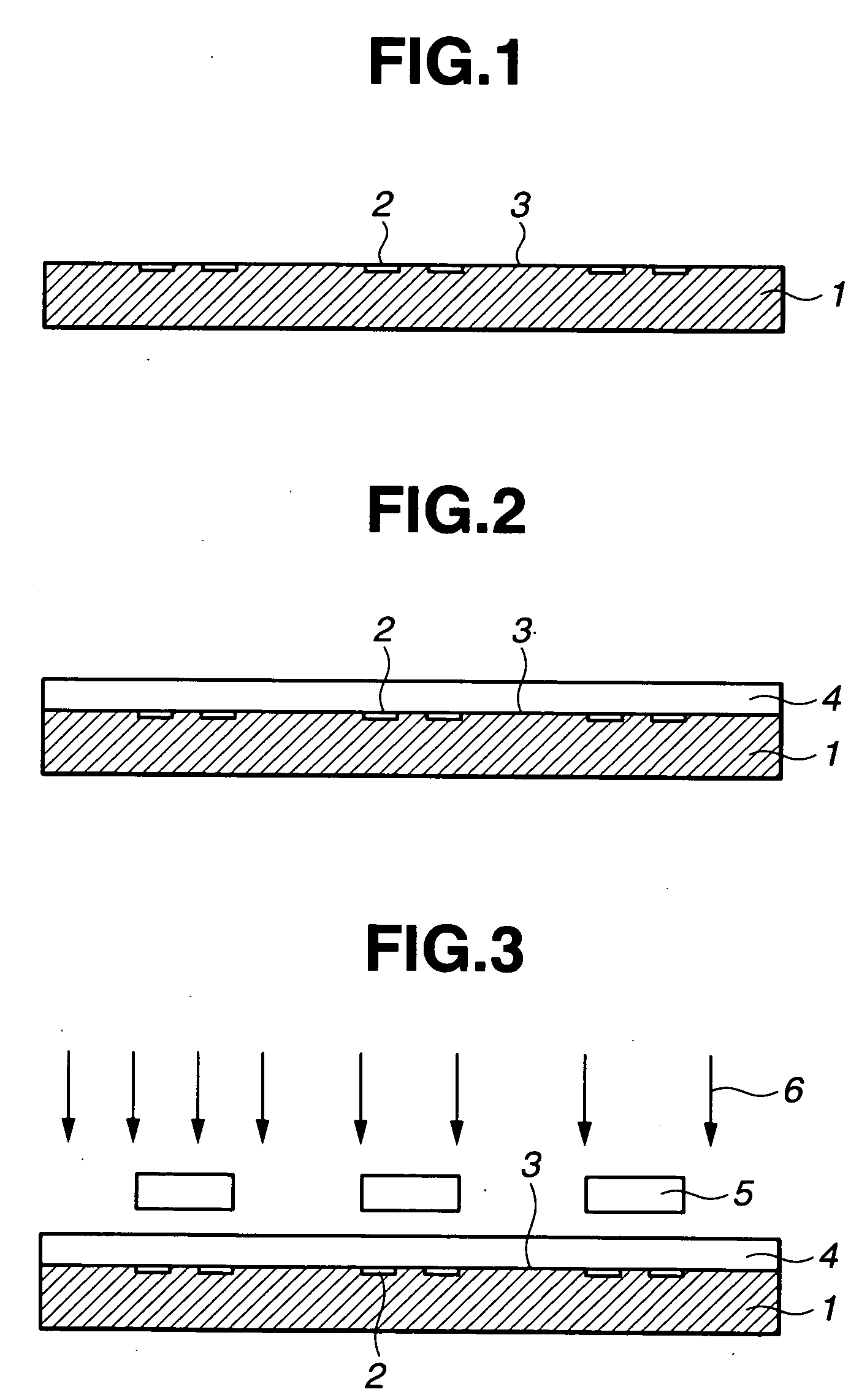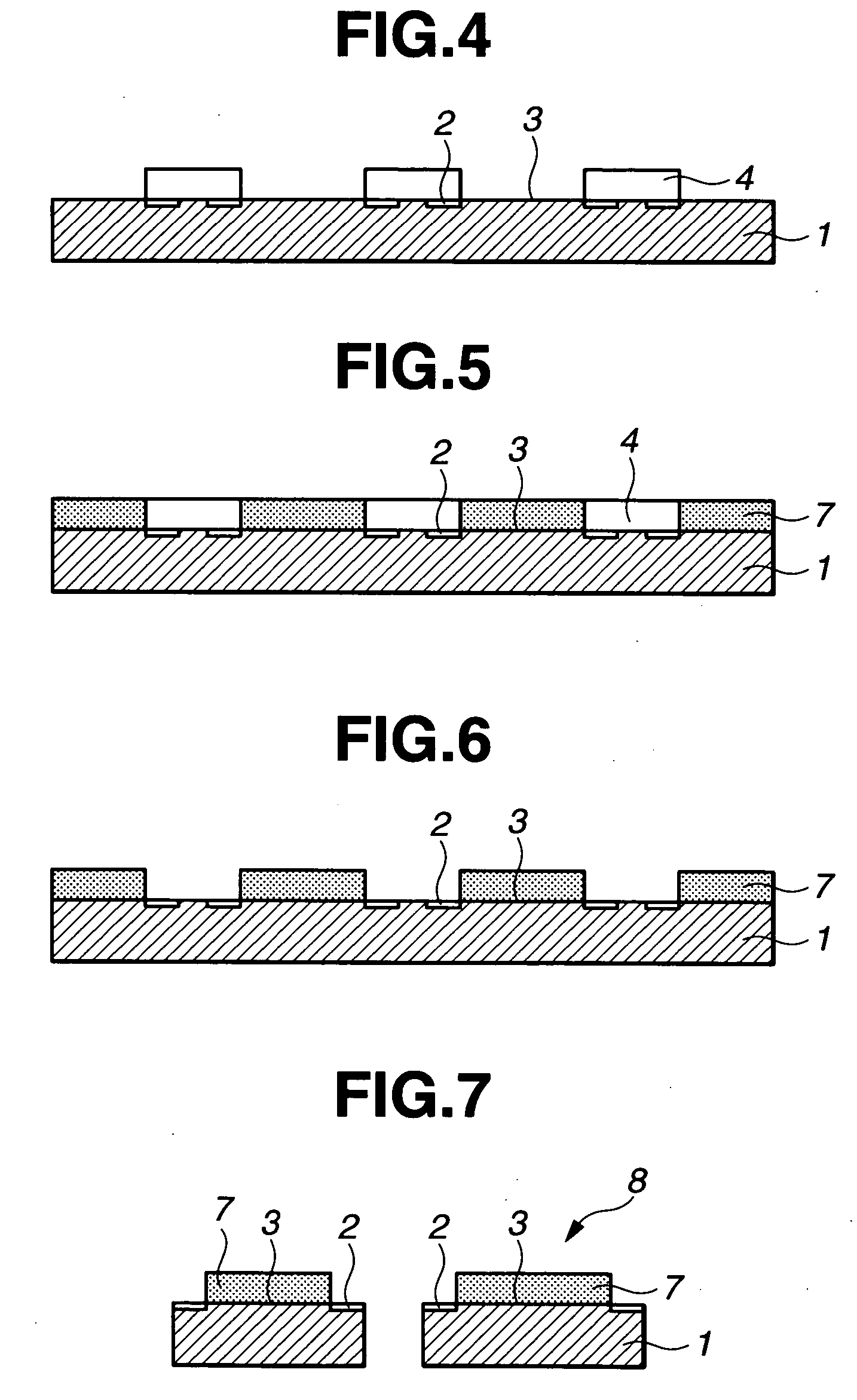Method for sealing semiconductor component
a technology for semiconductor components and resin compositions, applied in semiconductor devices, semiconductor/solid-state device details, electrical devices, etc., can solve problems such as poor heat resistance of acrylic-modified silicone resin compositions, easy discoloration, and raised problems, and achieve good adhesion and heat resistance.
- Summary
- Abstract
- Description
- Claims
- Application Information
AI Technical Summary
Benefits of technology
Problems solved by technology
Method used
Image
Examples
example
An example of the invention is described with reference to the drawings. FIGS. 1 to 7 illustrate the semiconductor component sealing method of the invention.
FIG. 1 is a schematic cross-sectional view of one exemplary semiconductor component substrate used in the invention. On the substrate 1, a plurality of circuit regions 3 and electrodes 2 connected thereto had been formed.
A positive resist material SIPR-9271 (Shin-Etsu Chemical Co., Ltd.) was applied onto the surface of the semiconductor substrate 1 by using a spin coater at 2,000 rpm, forming a resist layer 4 of 20 μm thick on the substrate 1 as shown in FIG. 2.
As shown in FIG. 3, a photomask 4 in which light-shielding zones of 3 mm×2 mm were spaced apart at intervals (light-transmissive zones) of 0.5 mm was placed over the substrate 1. Light 6 was illuminated through the photomask 4 whereby only those portions of the resist layer 4 corresponding to the circuit regions 3 were exposed. The light wavelength was 365 nm and th...
PUM
 Login to View More
Login to View More Abstract
Description
Claims
Application Information
 Login to View More
Login to View More - R&D
- Intellectual Property
- Life Sciences
- Materials
- Tech Scout
- Unparalleled Data Quality
- Higher Quality Content
- 60% Fewer Hallucinations
Browse by: Latest US Patents, China's latest patents, Technical Efficacy Thesaurus, Application Domain, Technology Topic, Popular Technical Reports.
© 2025 PatSnap. All rights reserved.Legal|Privacy policy|Modern Slavery Act Transparency Statement|Sitemap|About US| Contact US: help@patsnap.com



